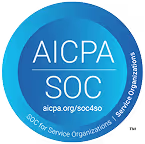On July 4, 2025, President Trump signed into law the One Big Beautiful Bill Act (OBBB) — a sweeping tax reform package that will reshape how Americans file their taxes. While the bill touches many aspects of the tax code, some of the most significant updates affect charitable giving.
Whether you take the standard deduction or itemize every year, these changes will influence how and when you give to charity. Here’s how this new bill could impact you.
1. A new charitable deduction for non-itemizers
Starting in 2026, taxpayers who take the standard deduction can also claim a new above-the-line charitable deduction: up to $1,000 for single filers and $2,000 for joint filers.
This deduction applies only to cash donations made directly to qualified charities. Contributions to donor-advised funds (DAFs) or private foundations don’t qualify.
What this means for you: If you’re one of the 90% of Americans who don’t itemize, you’ll now receive a tax benefit for your charitable giving, up to the limits noted above. Be sure to request and keep receipts for your donations so you can claim this deduction.
2. New limits for itemizers
If you itemize deductions, two new restrictions take effect in the 2026 tax year:
A 0.5% AGI deduction floor
You can only deduct charitable contributions that exceed 0.5% of your adjusted gross income (AGI). For example, if your AGI is $100,000, only gifts you make above $500 are tax deductible.
What this means for you: To maximize your deduction, you may want to consider bunching donations in 2025. For example, if your AGI is $100,000 and you typically donate $5,000 each year, you may consider donating $10,000 in 2025 and skip giving in 2026 to avoid the 0.5% limit.
In future years, making a $10,000 donation every other year would yield $9,500 in deductions, compared to just $9,000 if you gave $5,000 every year.
A 35% deduction cap for high-income donors
A tax deduction has the effect of shielding your income from taxes in the amount equal to your marginal income tax rate. For example, if you are in the 24% bracket and you deduct $1,000, that effectively makes $240 of your income tax-free.
However, beginning in 2026, if you’re in the highest tax bracket (37%), the value of your deduction will be capped at 35%.
For example, in 2025, a $1,000 donation would reduce your taxable income by $370. Beginning next year, however, it will only reduce your taxable income by $350. This only applies to taxpayers in the 37% bracket; other taxpayers are unaffected.
What this means for you: If you’re in the highest tax bracket and planning a significant charitable gift, consider making it before 2026 to maximize your tax benefit.
3. Extensions from the 2017 Tax Cuts and Jobs Act
The OBBB Act also made permanent several provisions first introduced in 2017:
- Higher standard deduction: $15,750 for single filers or $31,500 for joint filers in 2025, indexed for inflation.
- 60% AGI limit on cash donations: Permanently allows you to deduct up to 60% of your AGI for cash contributions to qualified charities (up from 50%). For example, if your AGI is $100,000 and you donate $60,000 in cash, you can deduct the full amount from your taxes. This applies to all taxpayers — but those in the highest tax bracket will be subject to the new 35% deduction cap starting in 2026, slightly reducing the benefit.
- Extended the estate and gift tax exemption: The federal estate tax exemption, which was set to expire at the end of 2025, was increased to $15 million for single filers or $30 million for joint filers in 2026, with adjustments for inflation going forward.
What this means for you: Most estates will no longer be subject to federal estate taxes. As a result, lifetime giving — rather than planned giving after you pass away — will be the primary way most people receive charitable tax benefits.
What should you do now?
If you take the standard deduction: Take advantage of the new universal charitable giving deduction by giving cash and saving your receipts.
If you itemize:
- If you’re planning a large gift, consider making it this year to avoid the 35% benefit limitation that begins in 2026.
- Starting in 2026, using bunching strategies to surpass the 0.5% AGI floor.
The bottom line
The One Big Beautiful Bill Act makes charitable giving more inclusive for everyday taxpayers while placing new limits on high-income donors. No matter your income level, the best strategy is to plan ahead. Align your giving with both your philanthropic goals and your tax situation to ensure that you — and the charities you care about — receive the maximum benefit.
Make your free estate plan today

Make your free advance healthcare directive

Make your free durable power of attorney

Make a stock donation today

Make your free revocable living trust










